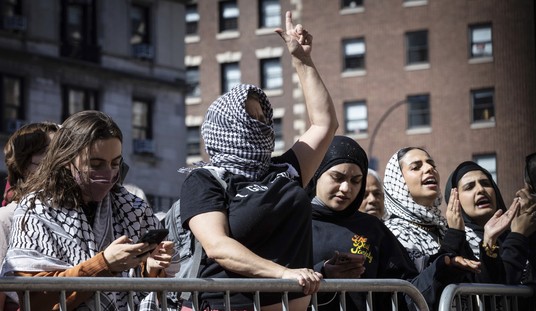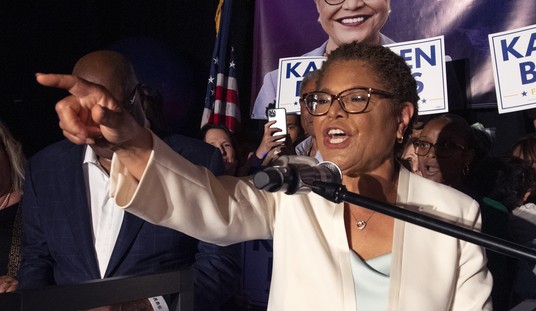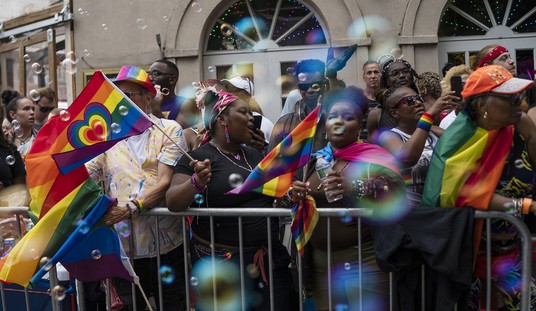Greetings from the sports desk located somewhere below the decks of the Good Pirate Ship RedState. Sammy the Shark and Karl the Kraken are begrudgingly busy cleaning fish crackers off the couch after another weekend spent doing nothing but this:

So, as usual, I’m doing all the work here.
The college football bowl season kicks off this coming weekend (December 16), and as noted earlier I’m doubtless close to if not the only person around these parts who genuinely cares about the Radiance Technologies Independence Bowl on December 16 in Shreveport, Louisiana, as it features my preferred team the Cal Bears taking on Texas Tech. Go ahead and chortle, SEC fans. I’m used to it.
What the pre-game publicity, such as it is, hasn’t featured is a lengthy list of players from either team opting out of the game due to entering the transfer portal. A thumbnail sketch of said portal is in order. Since 2018, collegiate athletes, regardless of sport, have had the option of entering their name into a database, letting other schools know they’re interested in transferring from their current college. This was something of a reaction to the situation where, while students could transfer from one higher learning institution to another — okay, stop snickering about the “higher learning” part — it was a convoluted process. In contrast, high-roller coaches could leave one job for another with relative ease.
Originally, should a student transfer from one school to another, they would have to sit out a year. In 2021, the NCAA decided this was punitive. Thus, going forward, on the occasion of a student’s first transfer, they would be immediately eligible to play for their new school. The results have been predictably chaotic. On the football side of things, whereas there once was a reasonable expectation that when a recruit set foot on campus as an impressionable freshman, he would be suiting up for his chosen school and his chosen school alone for the next four years, now college football faces much the same situation as college basketball. There is a difference in that whereas basketball programs figure on reconstructing their roster each year due to the top incoming players showing up for their freshman season and then declaring for the NBA draft, football programs now must contend with far more extensive roster reconstructions than used to be the case due to graduation. Coaches are now spending as much time trying to convince their prime recruits to stay put as come to their school in the first place. Also, recruiting has changed in that now time must be allocated for convincing players who’ve entered the protocol and would enhance the upcoming season’s squad to make the journey to wherever.
To try and at least stem the emissions from this variant of Pandora’s box, NCAA President Charlie Baker has floated a proposal that would end the pretense of collegiate athletics being a non-financially compensated student-athlete playground by allowing colleges to directly pay athletes via school-overseen direct endorsement deals and eliminating restrictions on “educational related benefits.” Some more details:
The proposed changes would create a new top tier, or subdivision, for the richest programs. Those schools would be required to set aside at least $30,000 per year for at least half of their eligible athletes in an educational trust fund designed to serve as a launching pad fund. The subdivision would also require schools to work together to make their own rules for things like scholarship limits, recruiting windows and transfer requirements.
Translation: you figure out the details amongst yourselves, Enormous State University establishments.
On its surface, the idea has merit. For the big boys, football is a money-printing machine with tens of thousands in the stands and tens upon tens of millions in crisp green bills flowing into school coffers from broadcasting rights. While individual players now can license themselves through NIL deals — for example, USC quarterback and 2022 Heisman Trophy Winner Caleb Williams is pocketing a handsome sum through his assorted deals — not all players are so fortunate. Once upon a time, the lure of a full scholarship was a sufficient enticement for attending a college. Considering the state of college education today, who can blame even the most cliché-fulfilling dumb jock for going for the money instead.
The proposal derails itself in pretending it somehow would promote a level playing field between the sexes.
One reason Baker cited for allowing schools to directly compensate athletes is gender equity. Since the NCAA began allowing athletes to profit from their name, image and likeness in 2021, the vast majority of deal activity has involved athletes in men’s sports. There are a handful of top-earning women, like Louisiana State gymnast Livvy Dunne, but by and large women athletes have financially benefited less than their male counterparts. Under Baker’s proposals, payments to athletes would be subject to Title IX rules and would “help level what is fast becoming a very unlevel playing field between men and women student-athletes,” Baker wrote.
Shall we embrace reality? Women’s sports have nowhere near the earning power of men’s sports. On the men’s side, in 2010 all parties involved signed a 14-year contract for March Madness to the tune of $10.8B. In 2016, all parties involved reconvened to add an eight-year extension for the tidy sum of $8.8B. Some quick math shows that the extension pays $1.1B a year going forward. So, how much does the women’s variation of March Madness pay? The current contract expires at the end of the 2023-2024 season. It pays … $34M. So, can we stop with the equity nonsense?
Should the NCAA’s proposal convert into operational procedure, it would forever end the pretense of college athletics, at least for the major sports, being anything other than a combined financial benefit for the schools and an unofficial minor league for the NFL and NBA. It would make college athletics semipro, only more so. Personally, this is not how I would prefer things. Still, the traditional aspects of college athletics being for non-professional athletes are as extinct as the notion that conferences should reflect natural regional layouts. Like it or not, college sports are professional sports under a different title. Might as well make it official.














Join the conversation as a VIP Member